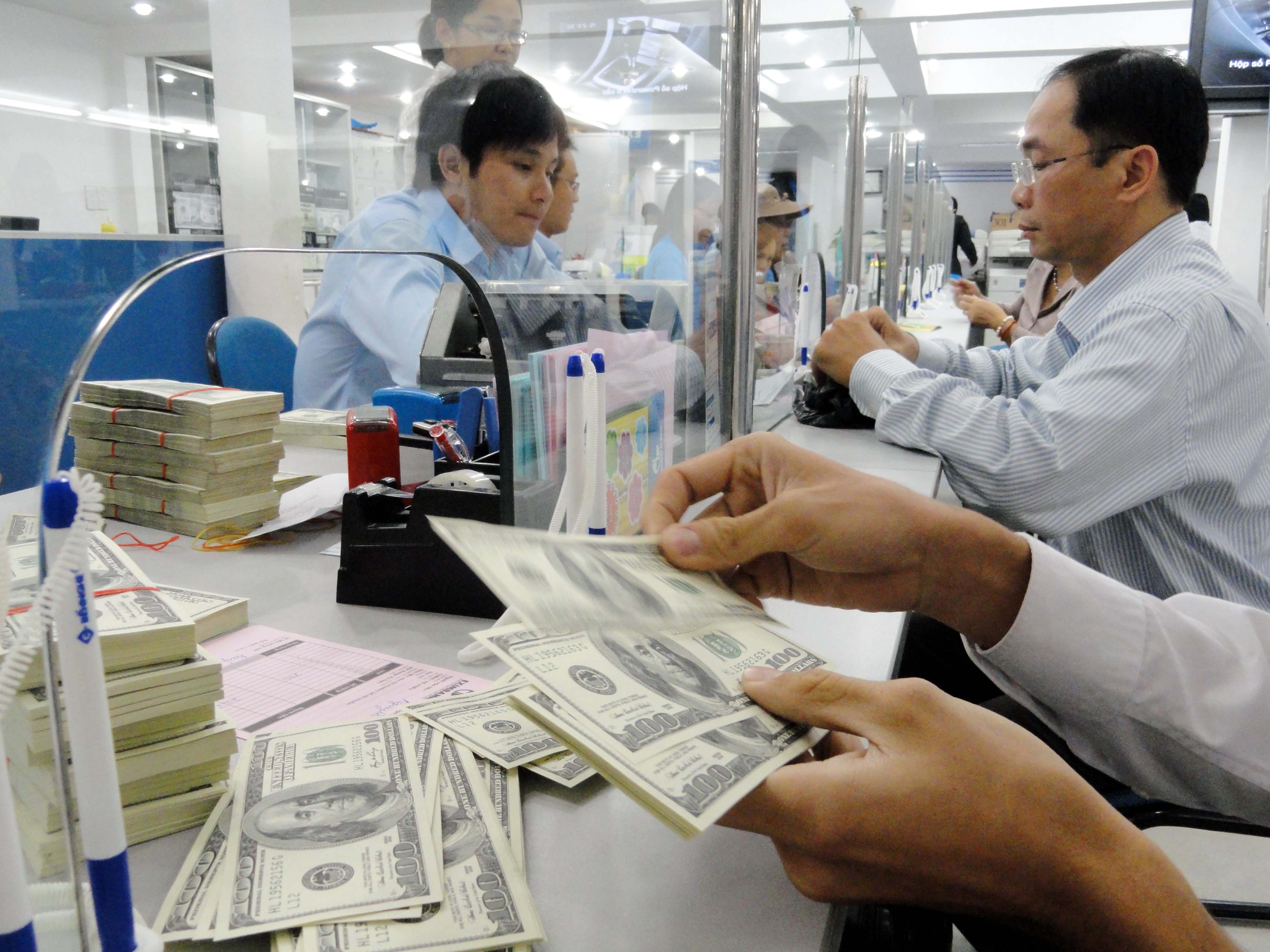The foreign exchange (forex) rate between the US dollar and the Vietnam dong has fallen back after the information of the intervention in the forex market of the State Bank of Vietnam (SBV) spread.
Many banks have reduced the forex rate, especially the bid price for the greenback, by VND40-80 per dollar to around VND21,300-21,320 for bid and VND21,360 -21,390 for ask.
In early October, the forex rate suddenly rose, bringing the price of the US dollar close to VND21,400 per dollar, after staying stable for the first 9 months of this year due to speculation that SBV will adjust the exchange rate.
The central bank, after accessing that the rise of the forex rate was mainly due to psychological effect rather than supply shortage, announced that it would not adjust the exchange rate, but willing to sell foreign currency if necessary.
According to the calculations of some commercial banks, by the afternoon of Monday (December 1), the central bank has sold about $ 1.1 billion to intervene in the local forex market.
The intervention, along with low demand for the foreign currency earlier this month, helped bring down the exchange rate, according to local commercial banks.
"Earlier this week, the market has returned to normal and if in the next few days, the central bank is determined to stabilize and continue to sell the dollar, the exchange rate will decrease more," Dau Tu Chung Khoan (Securities Investment) newspaper under the Ministry of Planning and Investment quoted Phan Thi Thanh Binh, acting general director of ANZ (Australia and New Zealand Banking Group) Bank Vietnam Ltd, as saying.
In the past few weeks, the exchange rate has increased significantly. For a long time, the exchange rate was stable at around VND21,200 per dollar, but has moved up slightly at around VND21,400 per dollar, reflecting the demand - supply relationship as well as market expectations, Binh told the newspaper.
"Previously, banks often used negative foreign currency position for VND for production and business. After a long time with such a large negative state, now, banks are reducing that state, leading to market demand increasing," Binh said.
Besides, there is an important reason to be mentioned - the recent rally of the greenback on the international market. Specifically, the dollar has appreciated 10 percent against the Japanese yen and 3 percent against the euro in the past month, she said.
This may create an expectation on the market that the Vietnam dong will soon lose value against the dollar, she added.
|
HSBC (Hong Kong – Shanghai Banking Group) Vietnam Bank Ltd, in its monthly “Vietnam at a glance” report for December 2014, said in the short term, import demand should rise (as it did in November), putting pressure on the dong. “However, beyond this, the currency should enjoy stability from a current account surplus.” In November, imports rose 25.8 percent year on year, while exports increased 17.8 percent year on year. The sharp increase of import demand as well as profit-taking activity of foreign investors caused the dong to move towards the ceiling permitted by the SBV. Given the seasonal uptick of demand, the SBV has a choice of either allowing markets to dictate the exchange rate or injecting liquidity to keep the rate within the band. Governor Nguyen Van Binh had previously stated that the dong may be devalued by as much as 2 percent in 2014. “We believe that other than the occasional stress points, the dong will likely be stable thanks to the steady flows of sticky capital (FDI) and a balanced trade account ($2 billion surplus year-to-date),” said the report. |


















































